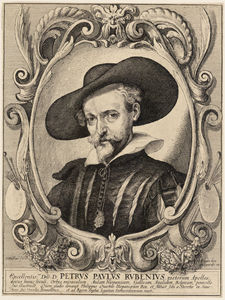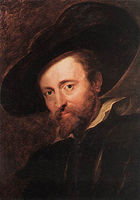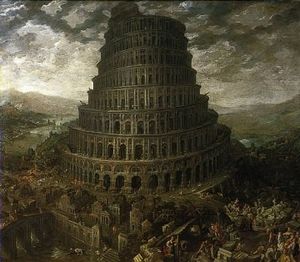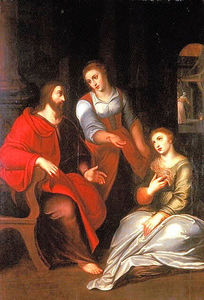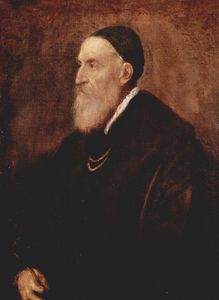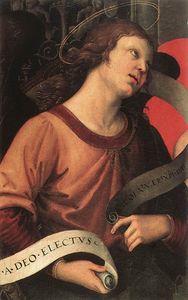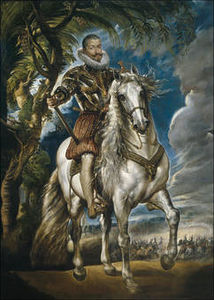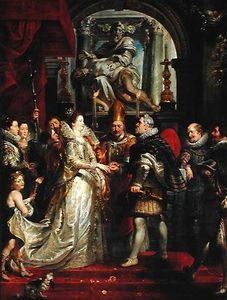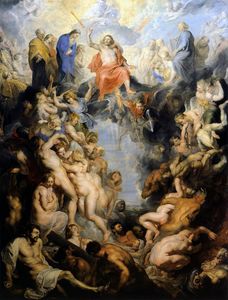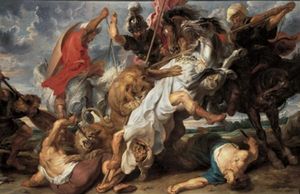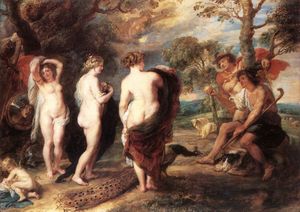Peter Paul Rubens Biography
- Full Name:
- Peter Paul Rubens
- Short Name:
- Rubens
- Date of Birth:
- 28 Jun 1577
- Date of Death:
- 30 May 1640
- Focus:
- Paintings, Drawings
- Mediums:
- Oil, Wood, Other
- Subjects:
- Figure, Animal
- Museums:
- Rubenshuis
- Art Movement:
- Baroque
- Hometown:
- Siegen, Germany
- Peter Paul Rubens Biography Page's Content
- Introduction
- Early Years
- Middle Years
- Advanced Years
Introduction
Rubens' work is well defined by his classical figures of historical, biblical and mythological subjects and stories. He completed many commissioned portraits for the affluent residents of Antwerp, Spain, Italy, France and England.
He had a fine eye for detail in creating a sumptuous realism in his works to express the human condition, faced with daunting tasks and obstacles.
Inspired by the great masters of Italy, he used their various subject matter and created his own oeuvre and developed a style that would make him a great master in his own right.
Peter Paul Rubens Early Years
Rubens was born in Siegen, Germany to parents Jan Rubens, an affluent lawyer and Maria Pypelincks. His mother was Catholic and because his father was a Calvinist they fled to Antwerp to escape the Protestant persecution.
Rubens' father had been the legal advocate to William of Orange's second wife, Anna of Saxony. He had a scandalous affair with her and got her pregnant. Consequently, he had to run to Cologne to escape imprisonment. Jan was eventually caught and imprisoned for two years.
Peter Paul Rubens' half-sister, Christina von Dietz, from his father's affair with Anna of Saxony, had to leave her mother's care as Anna went mentally insane and the little girl went to live with her step father, the Prince and her half siblings in the Netherlands.
Peter Paul Rubens was born after his father's imprisonment. From the age of ten he lived and studied in Antwerp. Sadly, his father passed away when he was just twelve years old.
Rubens studied at the Flemish Art School in Antwerp and received a humanist education, studying classical literature and Latin. He put the Flemish School of Painting on the map as he became one of the greatest masters of his time.
Rubens also become a master at the Guild of St. Luke in Antwerp in 1598 and studied under three different artists: Tobias Verhaecht, Adam van Noort and Otto van Veen.
As well as carrying out his studies, Rubens became a court page to a countess named Marguerite de Ligne, aged thirteen. However, bored by this work, he decided to train as an artist. This early exposure to affluent circles within the court actually helped Rubens to make a name for himself as an artist and to earn well-paid commissions.
Between 1600 and 1608 Peter Paul Rubens traveled to Italy to continue his studies in art and he also became a diplomat at the court of his first patron, Vincenzo Gonzaga the Duke of Mantua. He stayed at the Duke's court and produced various art works for him.
The artist visited Rome, Florence and Genoa and drew extensive influence from the Great Masters from the Classical period.
As an international diplomat, Rubens' art career flourished. First given the responsibility to see to political affairs in Spain under the service of the Duke of Mantua of Italy, he spent eight years there and later made a name for himself in England and France too.
He also travelled to the Northern provinces of the Netherlands to make peace between them and the Spanish.
Peter Paul Rubens Middle Years
In 1621 a twelve-year truce between the Dutch and the Spanish ended due to the sovereign Archduke Albert's death. His consort, Isabella, stayed on as governor but her task was difficult given the fact that Spain, France and England could not decide who to align themselves with.
Rubens was given the task of negotiating in France and England on behalf of Isabella, representing the Spanish Netherlands. He became a close confidante of Isabella's in 1627 she later made him a 'gentleman of the household'.
During his time in Spain Rubens became fascinated with King Philip II's collection of works by Titian and Raphael and frequently copied their subject matter as he added his own signature to them. He also produced an important portrait for the Duke of Lerma which helped him to gain popularity in Spain before returning to Italy.
In Italy Rubens had already become a well-known painter and was recognized for his works. He was commissioned by the church of Sta Croce in Gerusalemme and the Church Sta Maria in Valicella. The latter commissioned one of Ruben's most renowned works, Madonna and child with St. Gregory.
In 1608 Rubens' mother fell ill and so the 32-year-old made his way back to Antwerp to be with her but she died before he arrived.
From this point on the artist lived his life in Antwerp. In 1609 he was appointed court painter to the rulers of the Netherlands, the Archduke Albert and his wife Isabella. He was also given permission to open a studio in Antwerp outside of the court.
He took on many students who helped him with the large amount of commissions he received. His studio was very successful and Rubens went on to influence many generations of artists in Flanders and internationally.
During this period, Rubens created the crux of his works and is most noted for his vivid imagination in his depiction of human emotions and the expression of the body in the realistic style. He included various themes such as hunting, body torture and figures to express the intense relationship between the body, mind and soul. He also painted many landscapes.
In 1622, Rubens was asked to paint the interior of the Luxembourg Palace in Paris, France. The Queen mother Marie de Medici asked him to create a series of paintings depicting her life and that of her late husband Henry IV. The first panels were completed but the second half were not and subsequently, the project was abandoned as Maria was banished from court.
Peter Paul Rubens Advanced Years
In the same year as his mother's death Rubens married his first wife Isabella Brandt with whom he had three children. Sadly, in 1626 Isabella died of the plague.
Rubens busied himself with his diplomatic work. He spent a number of months in England and carried out numerous commissions for Charles I, including the decoration of the roof of his new Banqueting House at Whitehall. He also painted The Last Judgement as a gift for Charles I promoting peace between England and Spain.
In 1630, at the age of 53, Rubens remarried. His new wife, Helena Fourment, was just 16-years-old and was actually the niece of his first wife. The artist was fascinated with his new partner and adored her voluptuous figure. He used her as a muse and inspiration for his many classical works as well as mythical subject matter and portraits of her in motherhood.
Helena was born to a well-off bourgeois family and was considered one of the most beautiful women in Antwerp. At the time of marrying, Helena was the same age as Rubens' eldest son from his first marriage but Rubens simply said, "I am too fond of my freedom to exchange it for the embraces of an old woman. "
The children of Peter Paul Rubens:
Rubens had three children from his first marriage to Isabella: Clara Serena, Albert and Nicolaas. He made various sketches and paintings of his children, particularly Nicolaas. Rubens believed in peace amongst humankind and found comfort in the portrayal of his children and their innocence.
The artist went on to have five more children with his second wife, Helena, despite his age. They were Clara Johanna, Frans, Isabella Helena, Peter Paul junior and Constantina Albertina who was born eight months after his death.
In the latter years of his life Rubens' work was disrupted by arthritis and severe gout which meant he could no longer paint. He died on 30 May 1640 and was buried in St. Jacobs Church, Antwerp, leaving behind his young widow and children.

